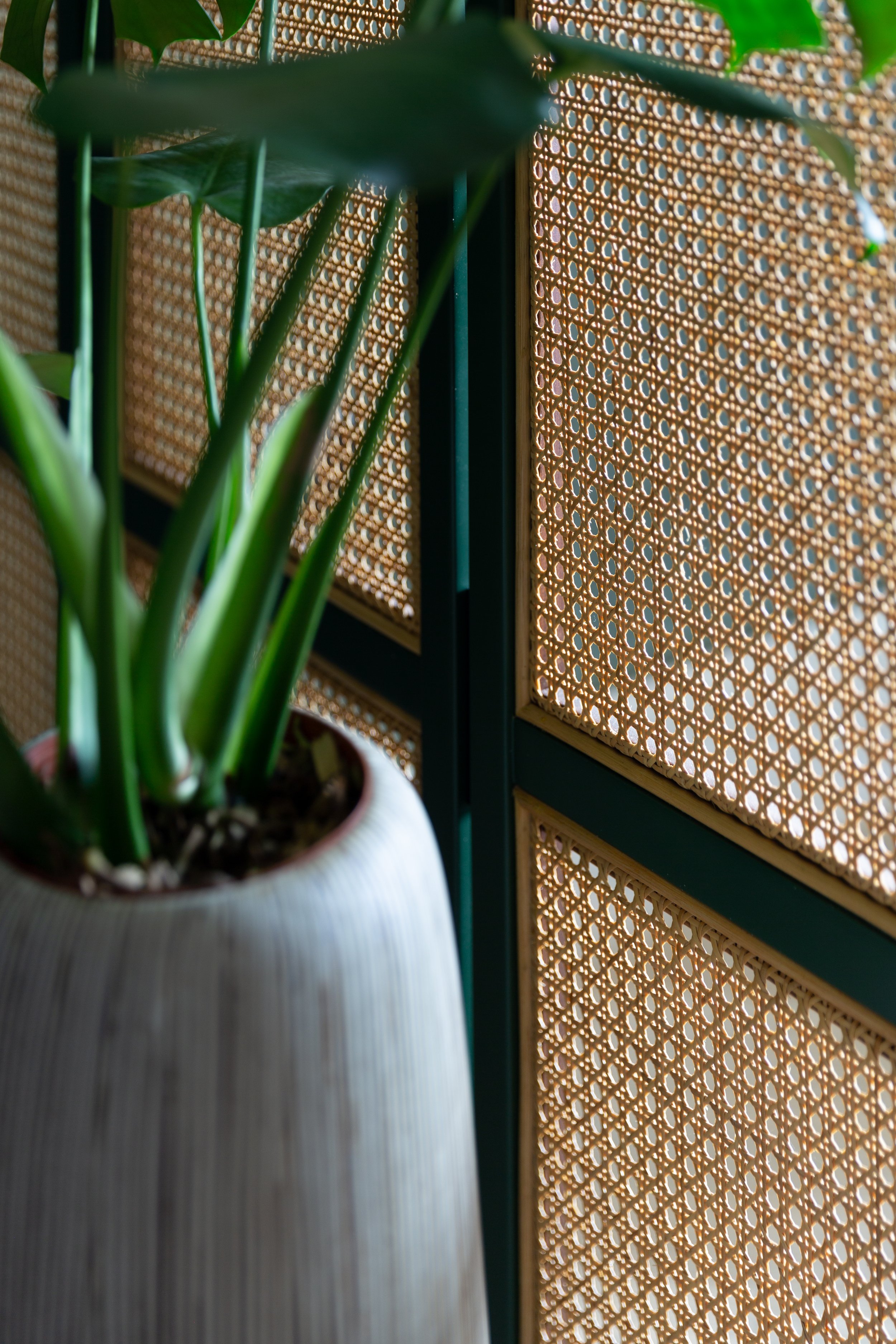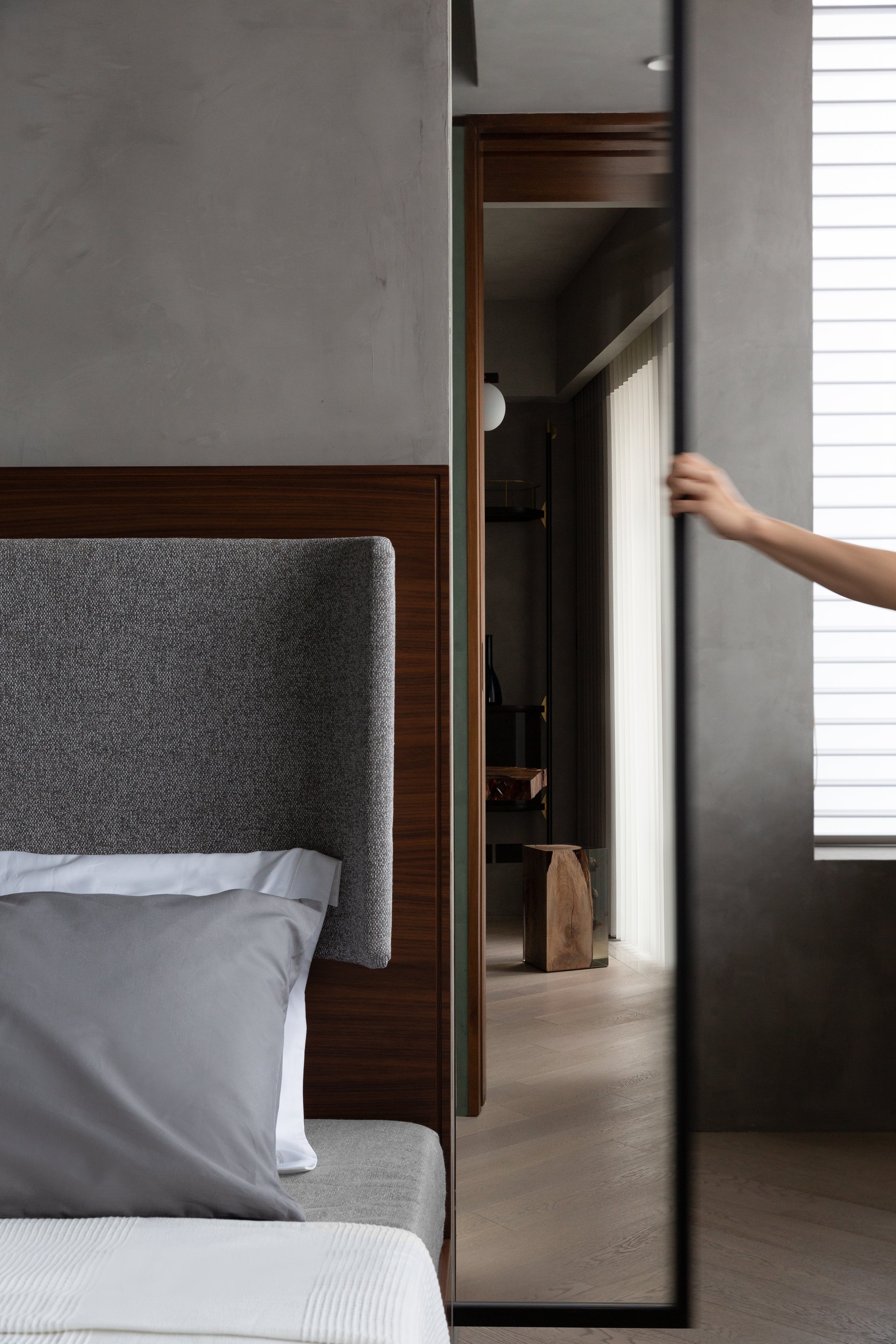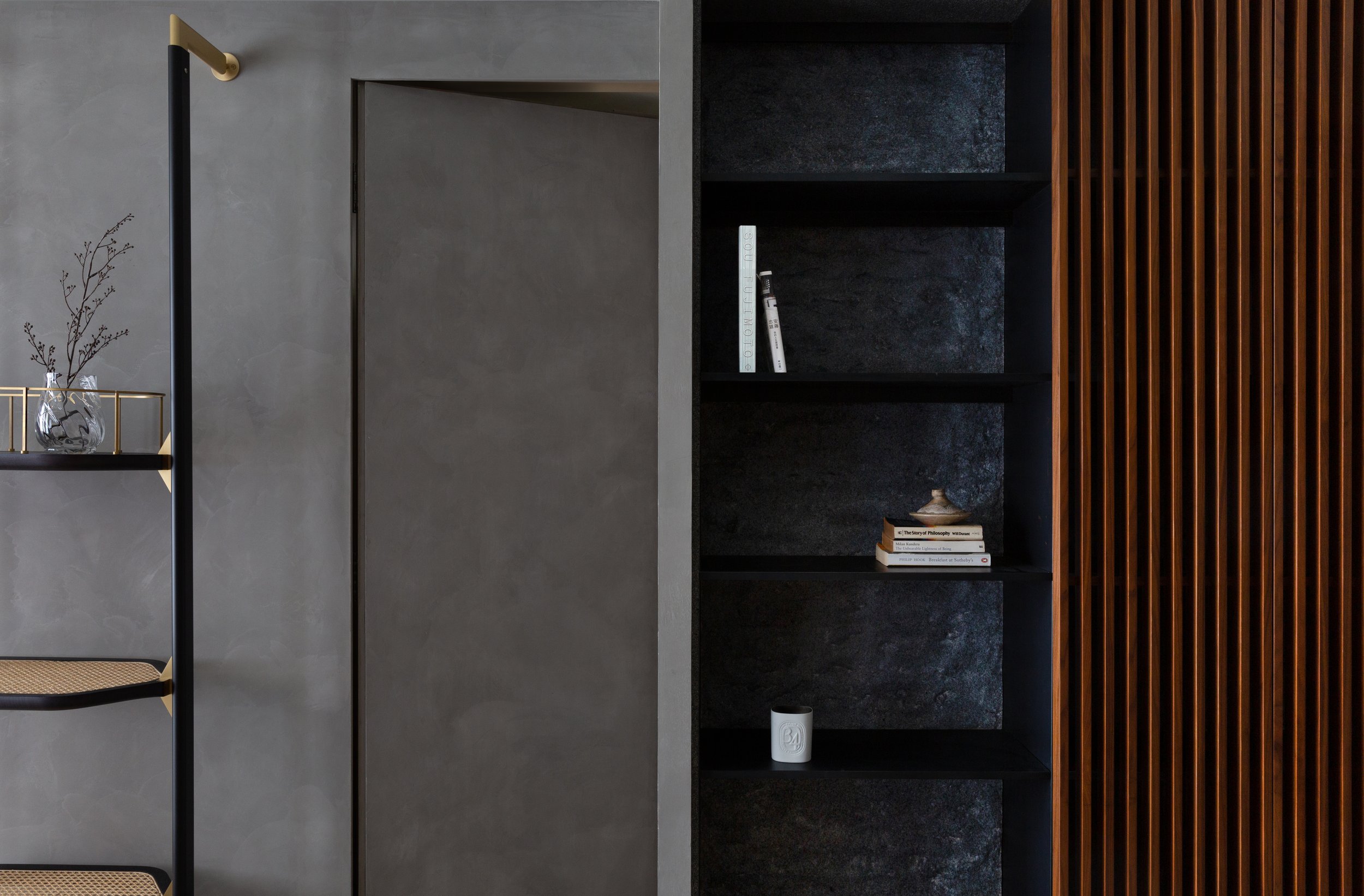
An apartment in the old Hong Kong district.
Inspired by “ The love for impermanence”, HIR Studio expressed this ancient Asian thinking through the use of tactile materials which age beautifully, like ancient wood, rough stone, woven rattan, and patina iron; The delicate beauty of the space is transient and ever-changing.
LOVE FOR IMPERMANENCE
HIR studio was asked by a client to transform a two-bedroom apartment into a studio flat in an old district in Hong Kong.
The young owner is a keen writer of art/ film/ fashion, and is frequently traveling between different cities to learn more about urban preservation. When she is ever in town, this apartment becomes a meditative retreat for her to relax and work. Inspired by her diversified interests and stories, they looked into “mono no aware”, or “love for impermanence”, an ancient Japanese thinking that refers to the bittersweet realisation of the ephemeral nature of all things.
“ Love for impermanence is the awareness that everything in existence is transitory. It embraces impermanence in objects, celebrating the passing of time and its traces left onto things.”
They expressed this awareness through the use of tactile materials that age beautifully, including ancient wood, rough stone, woven rattan, and patina iron, accompanied by a solemn palette of green and grey textured plaster to celebrate the craftsmanship that went through artistic processes.
They created a light-filled open space by removing one bed room and corridor, so that the sleeping area is blurrily separated from the living area by merely a translucent screen. The walnut timber slats and dark green textured plaster sit at the centre, while throughout the rest of the apartment, a cool palette in shades of grey is highlighted by the black rusting iron, dark green carpentry, stucco texture and the refined black steel frames; The soft rattan surfaces, along with the rustic wood furniture which are extracts from the wild nature, give a depth of warmth to the living space.
The 600-square-feet apartment is entered through a small vestibule. The rattan screen subtly reveals the living area, and diffuses natural light onto the raw iron surfaces. The black patina iron panels, which hide the shoe storage behind, age over time with a growing tarnish pattern, embracing the beauty of transience in the material. The black metal blends into the bookshelf, where the coarse stone gives a sense of primitive nature as one enters the living area.
The living area is a meditative place for working, reading, eating, and occasional gatherings. Fixtures and furniture were carefully chosen to deepen the sense of material’s impermanence and to appreciate the traces of craftsmanship left on objects. For example, the wood table is made from a thousand-year-old Kauri log which was naturally preserved in the forest swamps. Rough edges, organic holes, painting-like vein and knot patterns, are all preserved by minimal resin filling. Scent emanates as it evokes the awareness of the passage of time, a very long time.
The living area is a meditative place for working, reading, eating, and occasional gatherings. Fixtures and furniture were carefully chosen to deepen the sense of material’s impermanence and to appreciate the traces of craftsmanship left on objects.
For example, the wood table is made from a thousand-year-old Kauri log which was naturally preserved in the forest swamps. Rough edges, organic holes, painting-like vein and knot patterns, are all preserved by minimal resin filling. Scent emanates as it evokes the awareness of the passage of time, a very long time. The recessed wall in timber slats is the centerpiece in the living area. It softens the visually heavy structural beam, and softly separates the public from the sleeping area. Behind the portal and the sliding screen, the sleeping area lies against layers of grey walls, green plastering and carpentry, highlighted with walnut wood details as well as some finely crafted light fixtures.
Sliding panels are designed in various locations to conceal, to offer privacy, and to reflect. At the bookshelf the sleek wooden screens are set against the sturdy stone, ready to be slid across by hand, to conceal or to exhibit different items. Whilst the wooden screen door blurs the boundary between sleeping and living. When more sense of privacy is desired, the slatted screen can be drawn close. Its movements, together with the mirror screen behind the bed, deepens the feeling of transience, or flexibility, in the space. The daily use of these screens prompts a very intimate and playful interaction between the owner and space.
The main wall facing the living area and the bed is hand crafted in green venetian plaster. While throughout the rest of the flat the walls and ceiling were plastered in grey textured cement. The artisanal plastering leaves behind tactile traces on the interiors. The strokes and trowel swirls tell of the meticulous process that has once taken place, and their sheens will continue to alter with the owner’s touches and time.
A sense of tranquility is expressed through this tactile palette of ageing materials, coarse textures, and crafted accessories. The slatted screens open and close, the patina patterns grow gradually on the iron, while the rustic wood and rattan darken with daily touches. The delicate beauty of the space is transient and ever-changing, reminding the owner of the transitory moments in her life right now, upon which her memories shall precipitate, just like the traces left behind by time.










